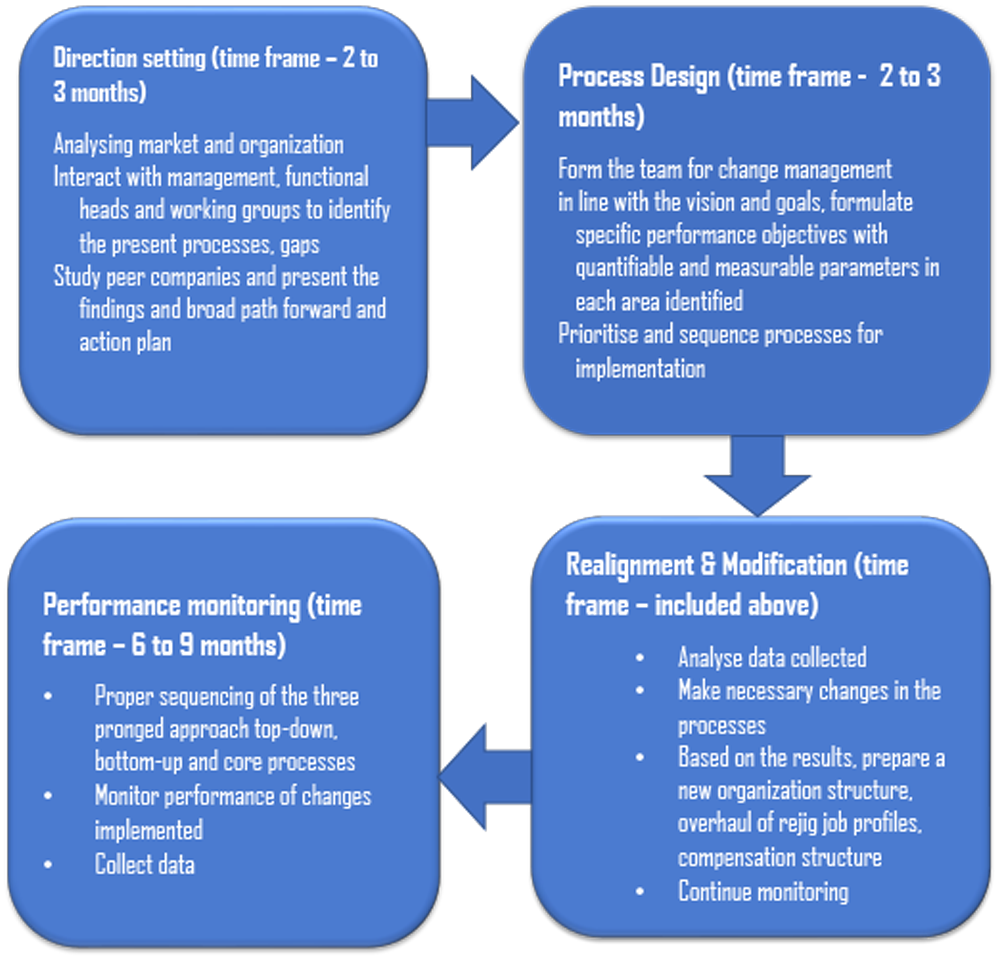Why Hire a Business Consultant?
The Story of of Indian MSMEs - The journey begins
A young enterprising man with dreams and talent sets forth on a journey, invests his small savings and funds borrowed from friends and family to start a business. His immediate co-workers are his wife and family members.
As the business starts taking roots, many committed and sincere hands join him in his endeavour to achieve growth.
Year after year they work hard, achieve a sustained growth and critical mass, become a recognized entity in their field and also receive appreciation in the industry.
Simultaneously on the personal front his off-springs also come of age and the owner has a very sincere ambition and desire that they become an integral part of his business.
The Dilemma
The man started this business years ago with a vision to create an entity which his off-springs would take charge and provide the necessary impetus to grow to the next level.
However many a times entrepreneurs face a road block or lets say a dilemma at some point in their journey for following reasons:
- The entrepreneur has been leading from the front in all areas of operation - be it Sales, Purchase, Production, Service, et. all. His co- workers have been looking up to him for solution every time they needed. But with age - keeping pace with the demands of a one man army business starts posing challenges.
- The second generation has dreams and aspirations of their own, is not inclined to join the family business.
- The entrepreneur having put his heart, soul, money and almost everything to nurture the business is definitely not keen to say quits but eager to see it continuing and growing .
Every business faces these challenges at some stage. So what can be done
- Is selling off the answer – definitely no
- Bringing a strategic partner – could be but has some prerequisites and challenges
- Second generation has intentions of taking over the mantle but after a certain time period - there is a lot that could be done during this intervening period before the hand over takes place
Before the entrepreneur starts contemplating any of the above he needs to introspect
Introspection:
- Does the business have defined vision and mission
- Are the processes & policies well laid out and people aligned to the vision and mission
- Are there defined SOP's, procedures, data collection/ collation systems for analysis, MIS reporting system, et.all available
- Has the culture and cooperation amongst his team of trusted lieutenants matured to accept the changes that will come with adopting any of the above options.
If the answer to any or all of the above is NO, then one needs to analyse as to how the company and its entire team can be equipped and empowered to take the next leap or more so catapult business to the next level
Transforming to equip and empower
- No single definition but broadly speaking……
Business transformation is a change management strategy which is aimed to align People, Process and Technology initiatives of a company more closely with its business strategy and vision to achieve measurable improvements in efficiency, effectiveness and enhancement in stakeholder value.
Why transformation
- A successful business has achieved a business volume that one person (read as entrepreneur) cannot get involved in every functional activity in the Company.
- A business strategy needs to be formulated scientifically, all processes need to be laid out, systems need to be set up, capable resources need to be put in charge and empowered - as the founder aims to achieve a higher trajectory growth and an enhanced stakeholder value
- To create an inclusive management – old & new resources - To combine the work ethics & technical competence of old and changing dynamics of the market
- The company develops new/ enhanced products which need new marketing tools, methods and delivery systems
And so on ...... there could be many more
Is DIY possible in transformation?
When a business owner decides to implement business process reingineering by a team drawn in-house, opinions will vary :
- More often, instead of being a company wide approach to transform, it becomes a departmental approach which defeats the very purpose.
- Every department looks at transformation in isolation and only from their department's perspective.
- People who have put in years of service in the same organisation have a limited vision - tend to be unaware of the developments and recent trends, alternate and improvised ways of performing a process, and so on. They are used to looking up to the owner for any change in working.
- ……. And so on and all these functional heads will have reasons and documents to support their arguments
The chaos of opinion normally gets unresolved leading to a clash – one-upmanship, inter-personal issues, size of the group, …
The owner/ entrepreneur– the driver and facilitator - planning to implement the transformation is at odds ,as each functional head is equally important for him. And without balance, integration and focus, such dis-jointed initiatives will lead to failure.
A half hearted and piece-meal approach to tackle specific issues leads to sporadic progress
Business mentoring to the rescue
Transformation being more of a voluntary than compulsive change requires a totally different approach each time and for each entity. Just like self medication can cause severe damange in the long run, so can attempts at self driven re-engineering without an expert advice.
The Best way forward
Appoint an external specialist who will integrate the team, identify issues and processes that need a change, formulate systems and standard operating procedures (SOP's), monitor change, collect and collate data, analyse and bring about the change management – all by hand holding employees from the lowest rank to the owner/entrepreneur.
Why Maxentra:
Our trump card is an integrated approach
|
TOP DOWN |
BOTTOM UP |
LATERAL OR INTEGRATED APPROACH |
- Vision and mission, setting of goals by Management
- Blowing the bugle with team formation
- Team to comprise representation of all departments
- Defining the role of each member and his road map.
- Periodic review against set parameters
- Prepare Management to read and analyse data presented on Company performance for effective and timely decisions
|
- Focus on people at grass root operations
- Front line operations : to focus on improving cost, quality and timelines
- Staff functions : to work on aligning activities to increase value
- Culture and behavior management - Get people at these levels to accept and adopt the changes for an improvement in performance and contribute positively to the process
- Measure the output in the changed environment, compare with earlier, suggest further improvements and implement
|
- Linking of people, activities and data
- Change processes from hierarchical to lateral flows across functions & locations
- Collate and integrate data collected from all functional areas into a single data base
- Prepare MIS and reporting systems to analyse data collected which will enable management to get daily, weekly, monthly performance figures
- Change product mix, improve market penetration, improve market shares and thus improve the bottom-line
|
Why integrated approach
- Combines the best of the three approaches
- Aides in creating a cultural change throughout the entity
- Facilitates an inclusive growth strategy which is always more welcome
Implementation road map

Once the Company is transformed & is ready to take on the challenges, then:
- The company can continue to run on auto pilot mode & perform much better with less time involvement of the promoter/ driver
- The promoter can appoint a CEO to run the Company
- The Company being run professionally is ready if the next generation is ready to take over and then can steer the Company to newer heights
- The company's valuations will be good if the promoter intends to bring in a strategic partner or a total sell off

